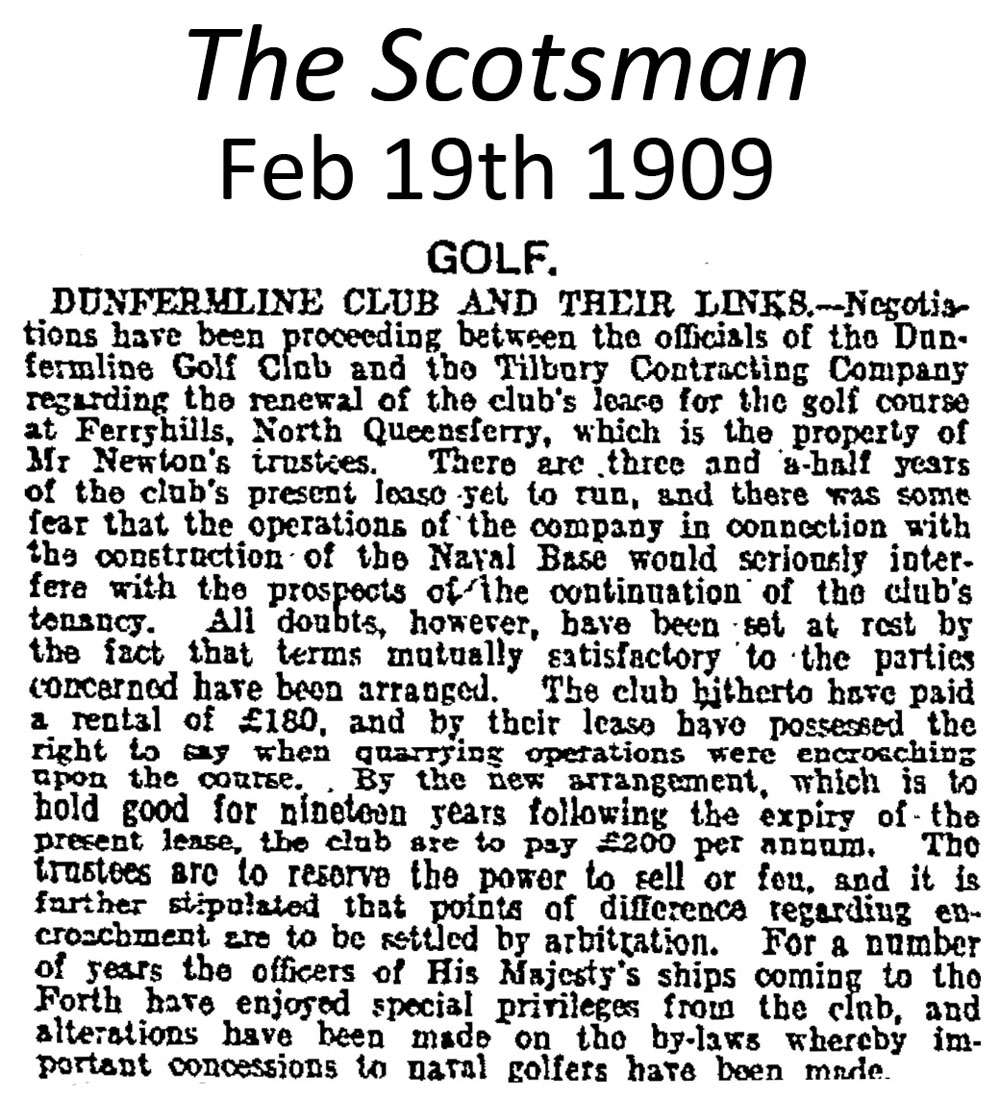1909 – Tilbury Contracting and Dredging Company leases Cruicks Estate
| < 1900 – 1st extension to Cruicks House | Δ Index | 1910 – School Boy Caddies > |
At the close of the nineteenth century, the Admiralty embarked on a plan to construct a new naval base in the Firth of Forth to counter the growing threat from the German High Seas Fleet based in Wilhelmshaven on the other side of the North Sea.
A submarine mining station was established at Port Laing in 1898. This was followed by Carlingnose Battery in 1902, and in 1903, The Admiralty purchased land at Rosyth to build a new dockyard and oiling facilities.
As work progressed over the following years, the Admiralty became interested in other parcels of land in the vicinity. Inverkeithing Bay was earmarked as a possible naval depot, in 1912 Port Laing became the site of the first Royal Navy Air Station in Scotland, and in 1916 Ferry Barns housed a Kite Balloon Station.
The nineteen-year lease of the grounds of Crooks that had been arranged with Alexander Will on 11th November 1893 was due to expire in 1912.
In 1909 Thomas Milne, the trustee of Alexander’s estate (he died in 1900), decided to lease the lands to the Tilbury Contracting and Dredging Company Limited, with a sub-lease to Dunfermline Golf Club.

The Club signed up to a new 19 year sub-lease, (with the Tilbury Contracting and Dredging Company as the main tenants) to run from the expiry of the current lease in 1912, so lasting until 1931.
The quarry workings were presumably intended to provide stone for construction at Rosyth. However, Easton Gibb and Son, the main contractor for the dockyard, was unable to agree terms with Tilbury and instead used freestone from Castlandhill Quarry. (Although Crooks quarry was leased to Tilbury, it remained quiescent until 1920 and did not disturb the Golf Club.)

What did disturb some of the members, was the warning in 1910 about hiring school boys as caddies.
| < 1900 – 1st extension to Cruicks House | Δ Index | 1910 – School Boy Caddies > |